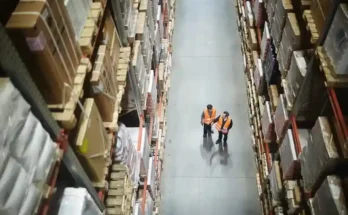Here are five essential PACKING tips for Moving your House:
- Organize your stuff, keep a to-do list, choose the right materials, and plan.
- Use these tips to move successfully and save yourself a lot of stress and aggravation.
- Read on for more information.
- Organize your belongings and stay organized!
Here are some tips to help you pack efficiently.
Organizing your Belongings
One of the most important steps in packing for a move is organizing your possessions. You can make packing easier by labeling boxes and drawers with the items that go into them. You can also transfer smaller items into trays and containers. Then, you can easily share these with your new home. If you don’t have the time to pack everything, you can always sell or donate unwanted items. A garage sale can make some extra money to help pay for the cost of cross-country moving.
Decluttering your belongings can be a tedious task. You will want to go through every item in your home, from the front to the back of the cabinet to your junk drawer. Make sure that nothing is forgotten. You might want to gather items belonging to other people and return them to their owners. For example, if you have grown children who left behind their toys and clothes, you can return these items to them.
Keeping a to-do list
Making a to-do list when moving can set you up for a lifetime of DIY homeowner success. Moving day can be a whirlwind, and keeping a list of things to do can be the difference between a successful move and an utter disaster. Write down everything you can think of during the day, and prioritize your list based on priority. Anna Bauer recommends using a Wunderlist or a giant yellow legal pad.
Before moving, organize your paperwork. Make sure to label boxes and make an inventory of all of your belongings. It’s helpful to know which items go in which room. For example, a TV or kitchen appliances may be on your list before a sofa. List them accordingly and make sure you label boxes and bags appropriately. Also, set up utilities before moving day, including your phone and Wi-Fi.
Choosing the Right Packing Materials
If you’re moving across town or overseas, you can use many types of packaging materials. The most popular are newspaper, stretch wrap, bubble wrap, and plastic bags. While these may be the cheapest options, they won’t protect your belongings or more expensive materials. Choosing the right packing material depends on your needs and the move you’re making.
Cardboard boxes work for small items but are not as suitable for large items. Consider buying reusable plastic boxes and plastic bins. These containers are waterproof and stable and can double as storage containers. Plastic containers are environmentally friendly and can protect your precious items. Dainty mirrors can be wrapped in blankets. Chunky sweatpants and sweaters also provide a protective layer for small items.
Planning Ahead
One of the most important aspects of moving is planning. Before moving, you should gather all the packing supplies you’ll need to pack and move all your items. Gather boxes, tape, wrapping material, and labels to protect your possessions and make them easier to identify. You may also want dish boxes or mattress bags to move mattresses. Before proceeding, make a list of all of your utilities. If you can’t find the same service providers in your new location, you’ll need to sign up for new ones. Also, remember emergency numbers so you can quickly get help in an emergency.
Before moving, make a timeline to get all of your things to the new home. Experts recommend a timeline of two months. Keep this in mind, but be flexible to allow for unforeseen circumstances. The timeline listed here is not an exhaustive one. You may want to modify it a bit to fit the timeline of your move. It’s best to begin packing as early as possible to minimize stress and confusion. Then, label your boxes so you’ll know where to find them when you get home.
Streamlining
There are several simple packing tips you can follow when moving your house. First, determine the rooms you will be packing and label them with a column for each box number. This way, you can keep the same room boxes together, preventing you from loading items you will not need until the day of your move. You can also consider packing the same things that you use most often. Once you have an accurate estimate of how many boxes you will need, you can begin packing them.
Another essential moving tip is to make an inventory of your belongings. List everything you want to keep, donate, sell, and pitch. This way, you’ll know exactly what to take and donate. Making this list will not only save you organized, but it will also save you money! As you go through each room, determine which items to keep, donate, and sell.
This will help you save money on moving, as well
Purging
When moving house, one of the best ways to declutter your home is to eliminate all duplicate items, keeping unnecessary things in your home is just a hassle. If you can’t bear to part with them, consider donating them. Old toys, clothing, and other sentimental items can be replaced easily online for a good price. Likewise, if you find that you need a certain thing, consider re-reading it.
To begin decluttering, label your belongings by category: 100% yes, 100% no, maybe, and maybe. Label your possessions by whether you’ll need them in the next 12 months or not. If you aren’t sure whether something is necessary, ask someone else to help you. If you cannot do this alone, enlist help from a friend or relative. It will make the task easier for both of you.
Investing in Quality Moving Boxes
Purchasing quality moving boxes is one of the most important things you can do to transport your belongings safely. You can easily organize your belongings by using boxes, which will make storing and transporting them easier. Quality boxes are also a great investment because they protect your possessions from damage during transit. While you may think that any cardboard box will do, it is best to invest in good moving boxes to prevent breakages.
The first thing to remember when buying moving boxes is the size of your belongings. If your belongings are too large or too small, you might end up with damaged or broken items. You can choose a different size or shape for the boxes, making the packing process more difficult. Also, the wrong size or shape of the packages can make a move dangerous. Investing in good-quality boxes will save you time and money.
Keeping Essentials in a Bag
Keeping the essentials in a bag is important when moving from one place to another. This bag should contain a few personal items you will need during the move, such as changing clothes or pajamas. If you have one, you should also pack toiletry items and a shower curtain. These items should be within reach, especially if your new home has a bathtub or shower combination. Once you’ve settled in and have your new place, you’ll be eager to take a shower!
One of the most common mistakes people make when moving is not remembering what they need to pack. This often results in them throwing things into boxes without realizing they need them. A little bit of preparation can go a long way! Listed below are some tips to help you keep your household essentials safe. You’ll be glad you did.
If you’re moving your house yourself, you should prepare a moving checklist and include all items.
Take Photos of your new Home Before Moving in.
Before you move into your new house, please take photos of its utilities. Utility companies charge customers based on their estimated usage. But they are not always accurate, which may cause a lag between your new usage and the actual usage of utilities. Before moving in, taking pictures of your new home helps you avoid this problem. If you can, you should also take measurements and the layout of your new house. You might be unable to move all your belongings in, for instance.
If you are moving into a rented home, it is important that you take pictures of the entire apartment before you move in. Even if you take photos of the area where you plan to proceed, you may have to deal with a landlord who tries to pocket your security deposit. Taking pictures will help prove that you did your part in such a situation. If you have a damaged apartment, you can easily prove to the landlord that you cleaned and repaired the damages before moving in.




